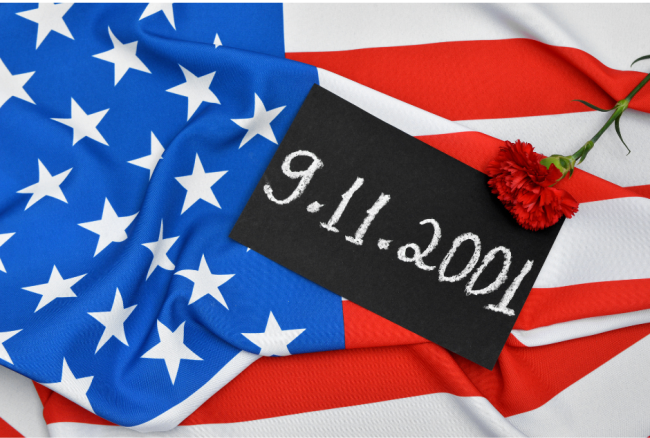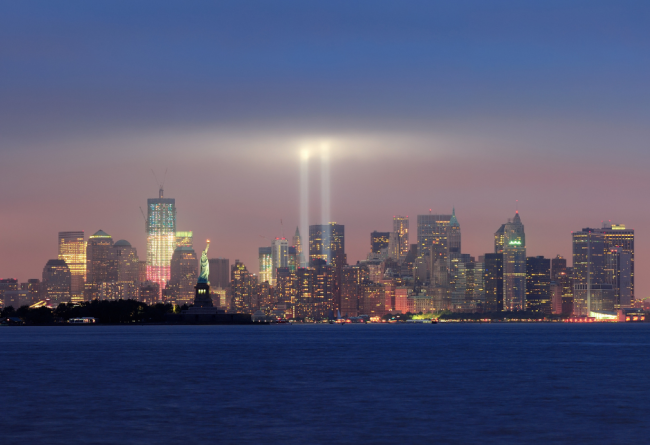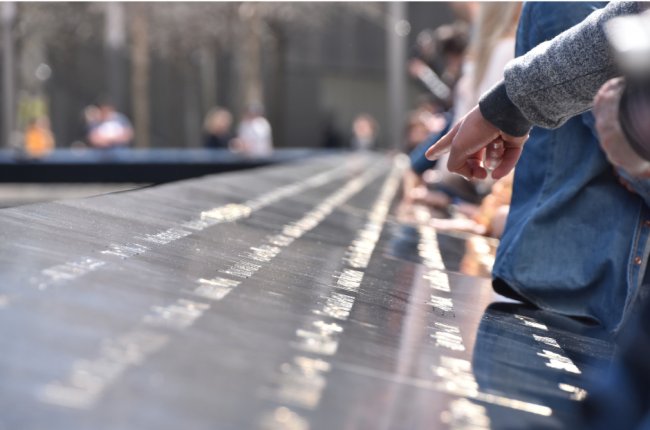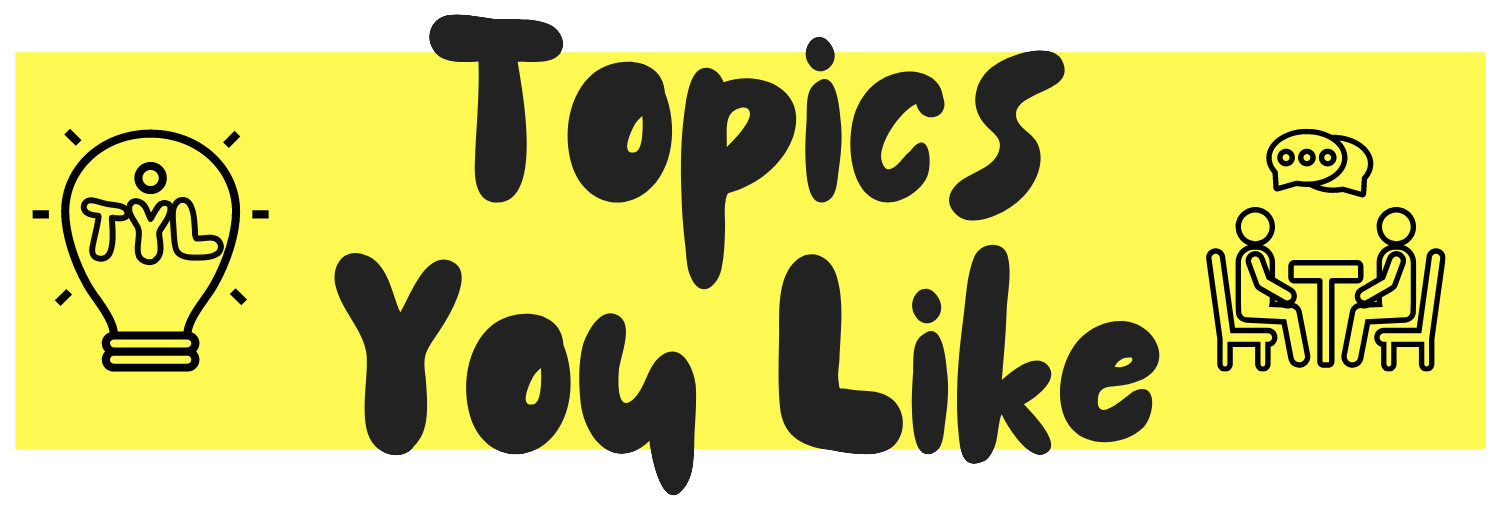Bone Chilling Facts About The Tragic 9/11 Attack and the Aftermath
Let’s remember some bone chilling facts about the tragic 9/11 attack the aftermath. On September 11, 2001, America and the world watched in horror as 2 hijacked planes struck the Twin Towers in the heart of New York City, representing the economic power of the United States. Another hijacked plane struck the Pentagon, the military might of the US, and a 4th one, Flight 93 was supposed to strike the Capitol, but crashed in Pennsylvania after passengers bravely intervened.

These Bone Chilling Facts About The Tragic 9/11 Attack and the Aftermath shouldn’t be forgotten
Nearly 3,000 lives were lost, countless families shattered, and the global landscape forever altered. Because we should never forget those moments, let us walk you through some of the most bone-chilling facts about the tragic 9/11 attack and the ripple effects that followed, honoring those we lost. Their stories, their sacrifices, should never be forgotten.
1. A quick timeline of the events
Let’s start with a quick timeline of the main events that unfolded that day. On the morning of September 11, 2001, at around 8:45 a.m, it was a clear Tuesday, a day like any other, until it wasn’t. An American Airlines Boeing 767, heavy with 20,000 gallons of jet fuel, smashed into the north tower of the World Trade Center in New York City. This wasn’t just a crash; it was a cataclysm, leaving a horrific, burning hole near the 80th floor of this 110-story giant. In that instant, hundreds of lives were lost, and hundreds more were trapped in the floors above.
As people started to evacuate, TV cameras were already broadcasting what so many initially thought must be a freak accident. A tragic event for sure, but an isolated one, right? Then, just 18 minutes later, any illusion of this being an accident shattered. A second Boeing 767—United Airlines Flight 175—appeared in the sky, abruptly turned toward the World Trade Center, and sliced into the South Tower near the 60th floor. The explosion was massive, spewing burning debris over nearby buildings and down to the streets.
At that moment, the incomprehensible became crystal clear: America was under attack. Lives were irrevocably altered, families were broken, and our sense of security was shattered. That was the day the world changed, a day we can never forget.
2. People developed serious lung issues from Ground Zero
After the Twin Towers fell, the site where they once stood, known as Ground Zero, became more than just a pile of debris. It was a toxic cauldron. In those early days, only about 1 in 5 workers had masks that could actually protect their lungs from the poisonous air—a cocktail of fumes, pulverized cement, glass fibers, asbestos, and even benzene from the jet fuel. On that first day alone, over 300 workers needed treatment for eye and respiratory issues caused by these pollutants.
It wasn’t long before folks got proper masks and gear, at least if they were official workers. But let’s not forget the volunteers, day laborers, and undocumented workers who were there to clean nearby offices. Many of them just tied bandannas around their faces and hoped for the best.
In 2002, the Centers for Disease Control sponsored a study to see just what this toxic environment had done to the health of those heroes at Ground Zero. The results were heartbreaking. Lots of first responders had developed serious lung issues and were living with ongoing symptoms of post-traumatic stress. It was so bad that some studies found these workers had lung function decline that was equivalent to aging 12 years.
New York’s then-Governor took some action in 2006, signing legislation to help those who’d fallen ill due to their work at the site. It took until 2011 for the federal government to step up, finally passing the James Zadroga 9/11 Health and Compensation Act, named for an NYPD officer who died due to illnesses linked to Ground Zero.
3. Cleaning up the site took more than a year
Clean-up at the site took over a year, crews working tirelessly day and night. Human remains were even found as late as 2006. And while the Environmental Protection Agency worked for years to clean the toxic dust from downtown apartments, the truth is, the impact of that day continued to be felt for years after the tragic events.

But amid the tragedy, we also saw resilience. A new skyscraper stands where the towers fell, opening its doors in 2014. And the National September 11 Memorial and Museum serves as a constant reminder to us all, helping us remember and honor those we lost.
4. The president was flying in limbo
When Chief of Staff Andrew Card whispered into President George W. Bush’s ear that “America is under attack,” it was meant to trigger a planned, orderly response, the “continuity of government” plan. However, almost everything that could go wrong did.
Bush was rushed onto Air Force One with no particular destination in mind. The pilot’s top priority? Get the plane as high and as far away as possible. They soared to 45,000 feet for extra security. Communication was difficult and the atmosphere tense.
President Bush’s national security team eventually picked Barksdale Air Force Base in Louisiana for an emergency landing, a site that, chillingly, was a primary base for B-52 bombers holding live nuclear warheads.
5. The US military was participating into a war game at the time of the attacks
Adding complexity to this horrifying scene, the U.S. military was in the middle of the “Global Guardian” war game, which involved three dozen real nuclear weapons loaded onto bombers. This presented an extreme risk; one of the worst-case scenarios considered was a terrorist plane striking an airbase hosting these nuclear warheads.
6. The US military was preparing to go DEFCON 3
Simultaneously, the United States was preparing to go to DEFCON 3, alarming Russian President Vladimir Putin who was unable to reach President Bush. Both countries were actually in the middle of military exercises, adding another layer of complexity to an already tense day.
Poor communication equipment meant that Bush had no way of receiving calls, not even from his wife Laura for more than three hours. And yet, DEFCON 3 was never meant for a 9/11 type scenario; it was intended for nuclear war. Activating it could have led to further calamities, including accidentally escalating international tensions.
So what exactly is DEFCON 3?
DEFCON stands for “Defense Readiness Condition,” and it’s a measure of the U.S. military’s readiness to respond to a threat. The scale goes from DEFCON 5, which is basically everyday peacetime, to DEFCON 1, which means nuclear war is imminent or has already started. So, the lower the number, the higher the urgency.
DEFCON 3 is a pretty big deal. At DEFCON 3, the U.S. Air Force is ready to mobilize in just 15 minutes, and there are heightened security measures across all military installations. It’s a stage where the military is on alert, ready to react to a situation that could escalate quickly.
During 9/11, the U.S. went to DEFCON 3 for the first time since the Arab-Israeli war in 1973. It was a sign that the military was preparing for the possibility of a larger, more organized attack, beyond just the hijackings that had already occurred. This isn’t a level of readiness that you sustain for a long time without good reason—it’s draining, both in terms of resources and manpower. But on that day, the uncertainty was so high that ramping up to DEFCON 3 was seen as necessary.
So when you hear that we were at DEFCON 3, know that it’s not something to be taken lightly. It means the nation was preparing for scenarios that are uncomfortable to even think about. And that adds another layer of complexity to an already tense and tragic day.
The gravity of the situation was so dire that officials even debated whether to proceed to DEFCON 2, the next highest level of military readiness, which would require reloading live nuclear warheads onto B-52s. Eventually, a secure line was established for National Security Advisor Condoleezza Rice to speak to Putin, agreeing on a cooperative stand-down.
7. The protocols were not followed
During the Cold War, there was this plan to evacuate top government officials to mountain bunkers in places like Raven Rock, Pennsylvania, and Mount Weather, Virginia. But on that morning, that plan fell apart spectacularly. Many in the presidential line of succession either couldn’t get to those bunkers, lost contact, or were uncooperative.
Vice-president Dick Cheney himself refused to evacuate the White House. Instead, he was whisked away to an underground emergency operations center beneath the East Wing of the White House.
8. At first they thought they were Soviet bombers
The unsettling truth was that America was totally unprepared for an attack from within. The FAA and the military had radars facing outward, expecting threats to come from overseas. When fighter jets were scrambled, they initially flew out to the Atlantic, as if expecting Soviet bombers. It took them a while to realize that the threat was already behind them, on American soil. The Pentagon was in ruins, and the Commander-in-Chief was flying aimlessly in Air Force One, uncertain of what would or could come next.
It was a day that not only exposed the vulnerabilities of a nation but also disrupted every conventional notion of security we had. Plans developed during the Cold War era were essentially useless. America was in uncharted territory, grappling with a new kind of threat while its leaders were quite literally flying blind.
9. Flight 93 was crashed by the crew and passengers
Now let’s get back to ordinary people and their heroic acts on that ill-fated day of 11th September.
The story of Flight 93 is an unforgettable narrative of ordinary people stepping up to do something extraordinary. I mean, just picture it: it’s a regular morning, and you’re hopping on a plane for what you think is going to be a mundane flight. Before you know it, you’re faced with an unthinkable situation, realizing that your plane is part of a coordinated attack on your own country. That was the reality for those on board Flight 93.The plane had been in the air for less than an hour when it was hijacked and turned southeast, towards Washington, D.C.
They were true heroes
Passengers and crew members didn’t just sit idly by. They called their loved ones and emergency services, learning in the process that this was no isolated event. Two planes had already crashed into the Twin Towers, and another into the Pentagon. The gravity of the situation sank in fast, and people on Flight 93 knew they had to act. There was a vote among them—a real democratic moment in the face of terror—and they decided they’d try to take back control of the plane. Just think about the immense courage it took to make that decision.
So, they fought back. Shouting, breaking into the cockpit, doing whatever they could to thwart the hijackers. And let’s be clear: their actions had an impact. Because of their bravery, Flight 93 was the only hijacked plane that day that didn’t hit its intended target. Instead, it crashed into an empty field in Pennsylvania, 20 minutes flying time from Washington, D.C. It was a tragic loss of life, but the passengers and crew prevented an even greater tragedy.
To this day, these individuals are celebrated as heroes. And rightly so!
10. The dog heroes of 9/11 truly deserve a special place in our hearts
Search and rescue dogs were absolutely crucial in the aftermath of the 9/11 attacks. Trained to find living people buried under the rubble, these dogs worked long hours, scrambling over sharp debris and breathing the same smoke, dust, and toxins that affected human rescue workers.

The dogs were trained to locate survivors, so you can imagine how it weighed on them emotionally when they found very few. Dogs live to please; it’s in their nature. Finding a survivor would be considered a “win” in their book, a job well done. But with so few survivors to be found, many dogs became discouraged. Handlers and other rescue workers noticed that their canine partners were showing signs of stress and even depression.
In an incredibly touching gesture, some firefighters and other victims would hide in the rubble so the dogs could “find” them, just to lift their spirits. Can you believe that? Even in the midst of such a tragedy, people were thinking of the emotional well-being of their canine companions.
And it wasn’t just the search and rescue dogs. Therapy dogs also played a huge role in the emotional healing process. These dogs provided comfort to the rescuers during their short breaks, offering a moment of solace and a wagging tail amid the chaos. Even just a few minutes of petting a dog can reduce stress and anxiety, and that brief respite was often enough to recharge the spirits of the rescue workers.
This is definitely one of the most bone chilling facts about the tragic 9/11 attack.
11. Only about 20 people survived the collapse of the twin towers
The rescue efforts at the World Trade Center after the 9/11 attacks were massive, involving thousands of firefighters, police officers, paramedics, and volunteers, as well as countless search and rescue dogs. However, despite their best efforts, the number of people pulled alive from the rubble after the collapse of the towers, was tragically low.
Only about 20 people were rescued alive from the World Trade Center’s ruins. Among those, there were some incredible stories of survival and bravery.
On September 12th, the day after the attacks, 11 more people were found alive, giving everyone involved a glimmer of hope. This group included six firefighters and three police officers. One woman was rescued near a pedestrian bridge on the West Side Highway. Port Authority Police Department (PAPD) officers John McLoughlin and Will Jimeno also had miraculous stories of survival. They were located by former U.S. Marines Jason Thomas and Dave Karnes after being trapped under 30 feet of debris for almost 24 hours. Their heart-wrenching rescue was later depicted in the Oliver Stone film “World Trade Center.
The last hope
The last person to be pulled from the rubble was Port Authority secretary Genelle Guzman-McMillan, who was rescued a staggering 27 hours after the North Tower collapsed. Her rescue marked a bittersweet moment in the days that followed, as hope of finding more survivors dwindled.
Communicating from pockets of space within the rubble, some firefighters and civilians were able to make cell phone calls for help. Despite this, the vast amount of debris made it incredibly challenging for rescue workers to reach them.
By the night of September 12th, officials had confirmed 82 deaths in New York City, a number that would tragically rise in the days and weeks to come. To make matters even more complicated, rescue efforts had to be paused several times due to structural concerns about surrounding buildings, including One Liberty Plaza, potentially collapsing.
12. “KSM”
The abbreviation “KSM” is one of the most bone chilling facts about the tragic 9/11 attack. This is why.
The tragedy that unfolded on September 11 was meticulously orchestrated by 19 hijackers affiliated with al-Qaeda. This extremist group was led by Osama bin Laden, who had cultivated a distorted view of the United States as a “weak” nation, an opinion informed by America’s past withdrawals from conflict zones like Lebanon and Somalia.
The primary architect behind the attacks was believed to be Khalid Sheikh Mohammed, commonly abbreviated as “KSM.” He was a well-educated individual, with a degree from North Carolina Agricultural and Technical State University. Over time, he nurtured an ambition to execute a grand-scale attack on American soil.
KSM’s collaboration with Osama bin Laden proved instrumental in translating this plan into action. They outlined a strategy that would entail hijacking commercial planes to target key American landmarks. The logistics for this operation were complex and transcontinental, involving planning meetings in countries ranging from Malaysia to Germany, as well as funding that flowed in from Dubai.
13. The attackers were familiar with the American culture
A significant part of the planning occurred in Hamburg, Germany. A group of individuals, who came to be known as the “Hamburg cell,” were integral to the plot’s execution. Among them was Mohammed Atta, the lead hijacker.
Many of the people orchestrating the attacks felt alienated during their time in Western countries, which intensified their extremist beliefs. Mohammed Atta and his group were uniquely positioned to lead the operation due to their Western education and familiarity with American culture.
14. Two sticks, a dash and a cake with a stick down – what is it?
Communication among the plotters was highly covert. Mohammed Atta regularly updated another key planner, Ramzi Binalshibh, via coded emails. These communications were so secretive that they utilized riddles to confirm the final date for the planned attacks.
The last coded message between Mohammed Atta and Ramzi Binalshibh was particularly chilling, as it employed a riddle to confirm the date of the impending attacks. Atta posed the following question to Binalshibh: “Two sticks, a dash and a cake with a stick down—what is it?” After contemplating this, Binalshibh understood that the two sticks represented the number 11 and the cake with a stick down symbolized the number 9. In many parts of the world, the day comes before the month in numerical dates, so this coded message effectively communicated that the attacks were scheduled for September 11.
That’s got to be one of the most bone chilling facts about the tragic 9/11 attack, right?
As the fateful day approached, Binalshibh relocated to Pakistan, sending a final message to bin Laden through a messenger in Afghanistan, confirming both the date and scope of the impending tragedy.
In essence, the 9/11 attacks were a highly coordinated and meticulously planned operation that exploited both the complexities of international geopolitics and individual radicalization processes. The devastating outcome forever altered the United States and had a global impact that is felt to this day.
